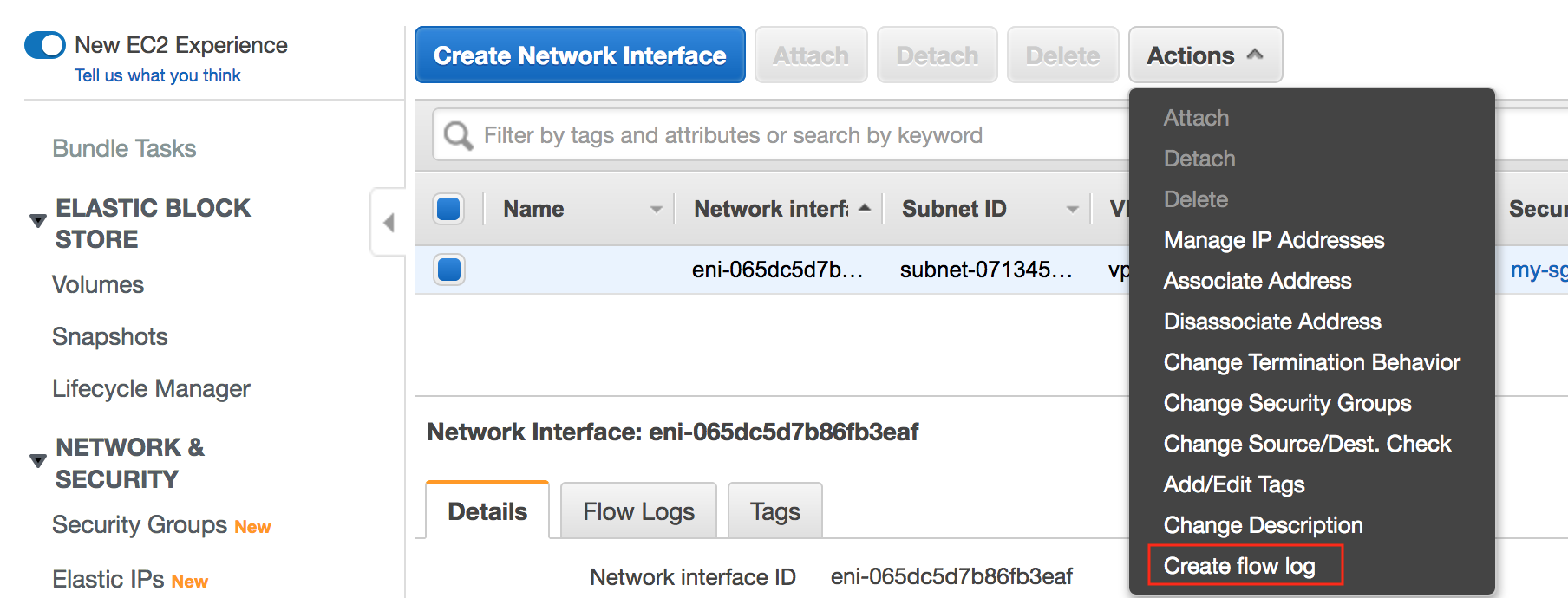

DevOps and SRE Teamsįast filtering, pivots, and drill-downs provide instant situational awareness, so DevOps and site reliability engineering (SRE) teams can quickly get to root cause and gather the details they need to restore services to a healthy state. Security engineering and operations teams gain pervasive instrumentation of potential threat activity to, from, and within AWS environments for faster incident response and more granular forensic analysis. You can create multiple flow logs publishing data to. VPC Flow Logs enables you to capture information about the IP traffic going to and from network interfaces in your VPC.

Network operators and engineers gain the ability to visualize traffic flows between regions, understand service dependencies within the cloud environment or between cloud and on-premise infrastructure, and utilize a data-driven approach to cloud infrastructure planning, growth, and cost management. Each network interface has a unique log stream that is published to a log group in AWS CloudWatch logs. Streamed to Kentik’s analytics-as-a-service platform in real-time, VPC Flow Logs provide powerful insight for teams across the organization. Log Configuration for VPC Flow Logs Header anchor link Go to VPC Console from the AWS Management Console and select the region you used for this workshop. VPC Flow Logs provide granular details of all network activity to, from, and between instances within AWS VPCs without having to instrument instances or services individually. Select Kinesis Data Firehose as the destination, selecting the ARN of the Kinesis Data Firehose data stream that you created. Select the type of traffic to capture in the flow log. We can use the toggle buttons on the right to display different size screens. Now with VPC Flow Logs for AWS, and network analytics from Kentik, cloud ops teams can stop flying blind. Navigate to the Amazon VPC console and create a new flow log. But pervasive visibility of network traffic details hasn’t been available in the cloud. However, most organizations find that understanding the network behavior of cloud-deployed applications is still a critical part of ensuring their availability and performance. And it’s tempting to think that “the network” is just one of the many infrastructure management headaches that disappear after migrating to the cloud. Repeat steps number 7 - 12 to enable VPC flow logs for other “VPCs” in the region.The migration of applications from traditional data centers to cloud infrastructure is well underway.

Select the “IAM role” that has permission to publish to the “Amazon CloudWatch Logs” log group and click on the “Create” button to make the necessary changes. The following example policy will find any VPC Flow Log in your region that is not properly configured and notify a group via email. VPC Flow Logs are nothing but a feature of VPC in AWS which allows you to capture all happenings (IP traffic going to and from the network interfaces) at. If destination for the “flow log data” is selected as “Send to CloudWatch Logs” then enter the log destination in “Destination Group” which is the name of the “Amazon CloudWatch Logs” log group to which the flow log is published. Select the destination to which the flow log data is to be published from the options.If the “S3 bucket” is selected for the log data to be published than provide the “S3 Bucket ARN” which is the ARN of the Amazon S3 bucket to which the flow log is published and click on the “Create” button at the bottom. In the “Create flow log” dialog box select the “Filter” from the dropdown menu that describes the type of traffic to be logged. VPC Flow Logs is a feature that enables you to capture information about the IP traffic going to and from network interfaces in your the VPC. Navigate to “VPC Dashboard” and choose “Your VPC” and click on the “Flow Logs” tab in the bottom dashboard panel.Ĭlick on the “Create flow log” button to create the “VPC Flow Logs”. Repeat steps number 2 - 6 to verify “Flow Logs” are enabled or not in other VPCs in the region. If there are no flow logs then “You do not have any Flow Logs in this region” message will be displayed. Scroll down the bottom dashboard panel and choose “Flow Logs” tab. Select the “VPC” that needs to be verified for “VPC Flow Logs”. VPC Flow Logs provide granular details of all network activity to, from, and between instances within AWS VPCs without having to instrument instances or. Scroll down the left navigation panel and choose “Your VPC” under “VPC Dashboard”. Select the “Services” option and search for VPC. VPC Flow Logs Used to capture IP traffic going to & from your VPC & stored in Amazon Cloudwatch logs VPC Flow Logs is a feature that enables the user to.


 0 kommentar(er)
0 kommentar(er)
